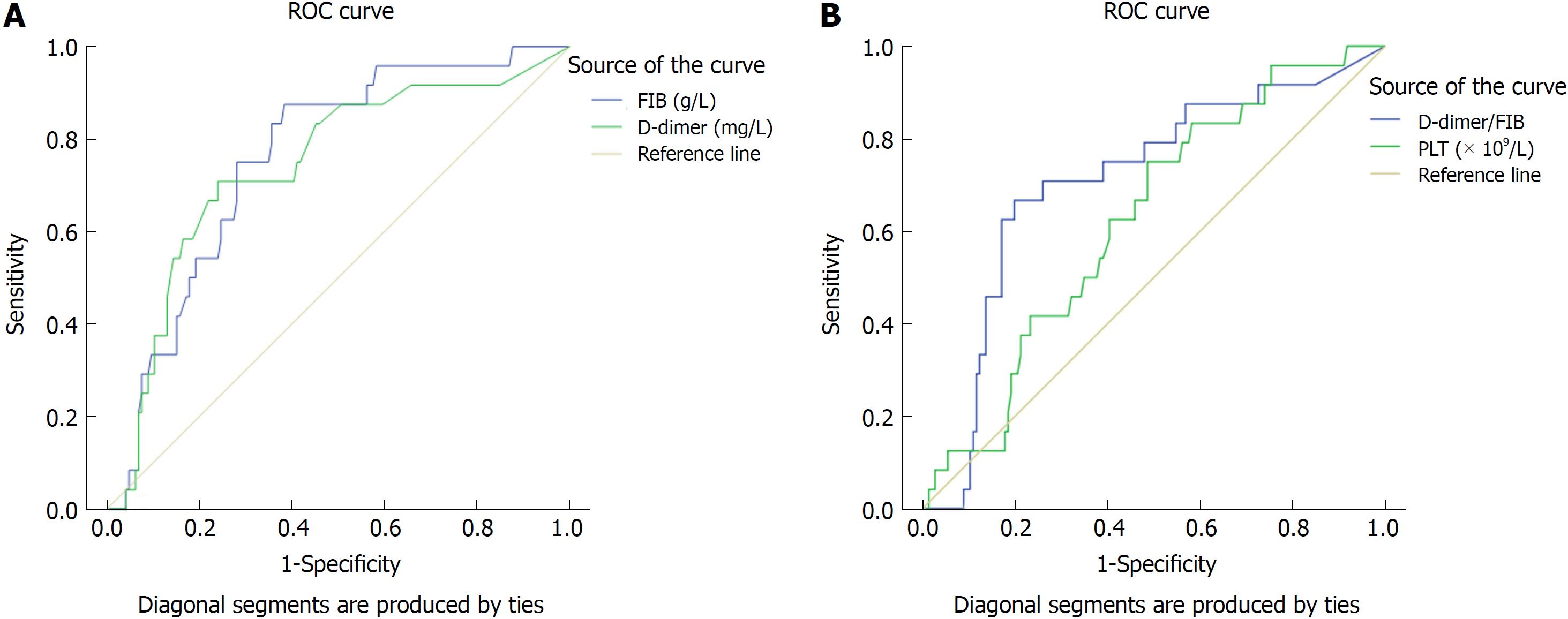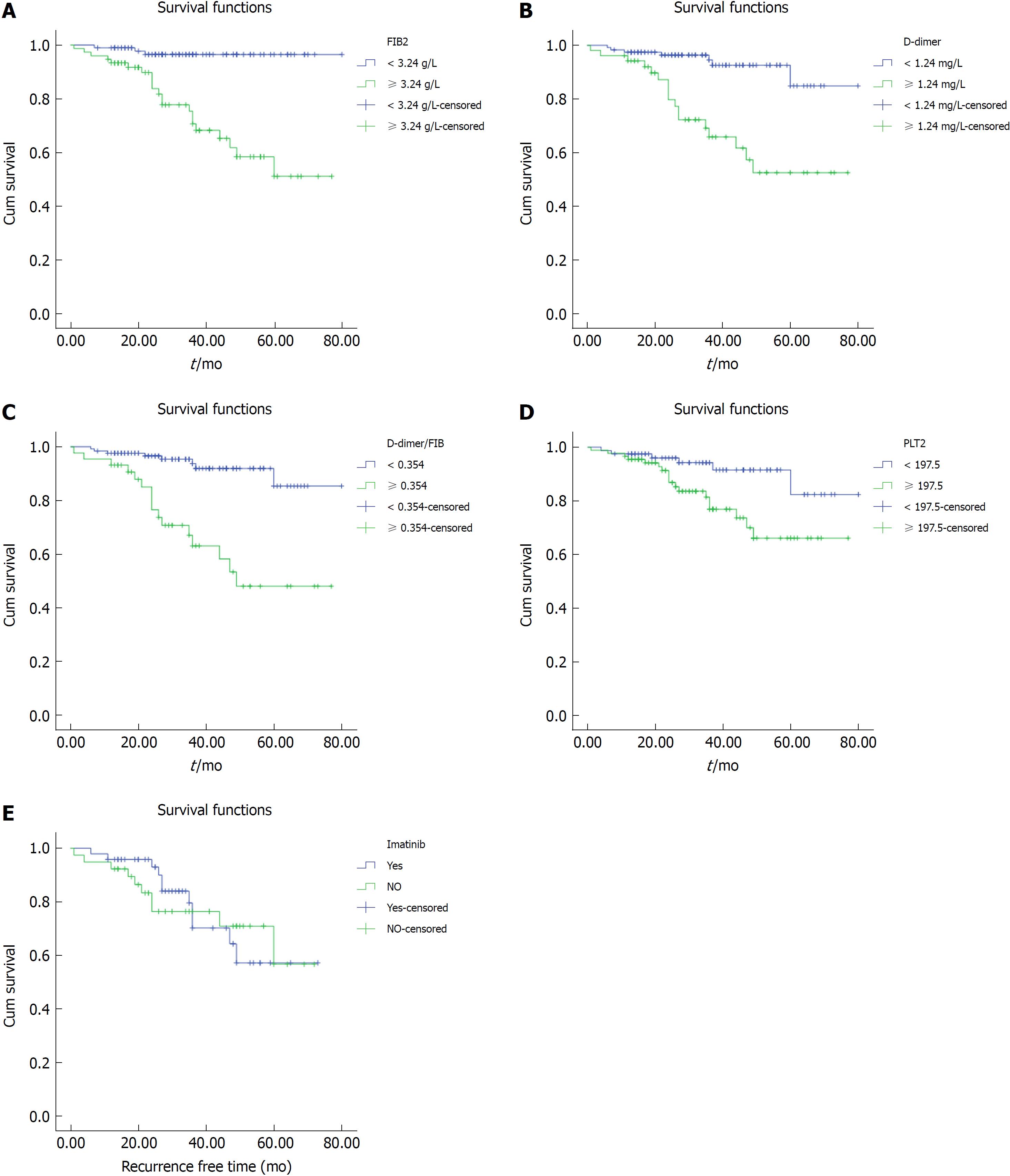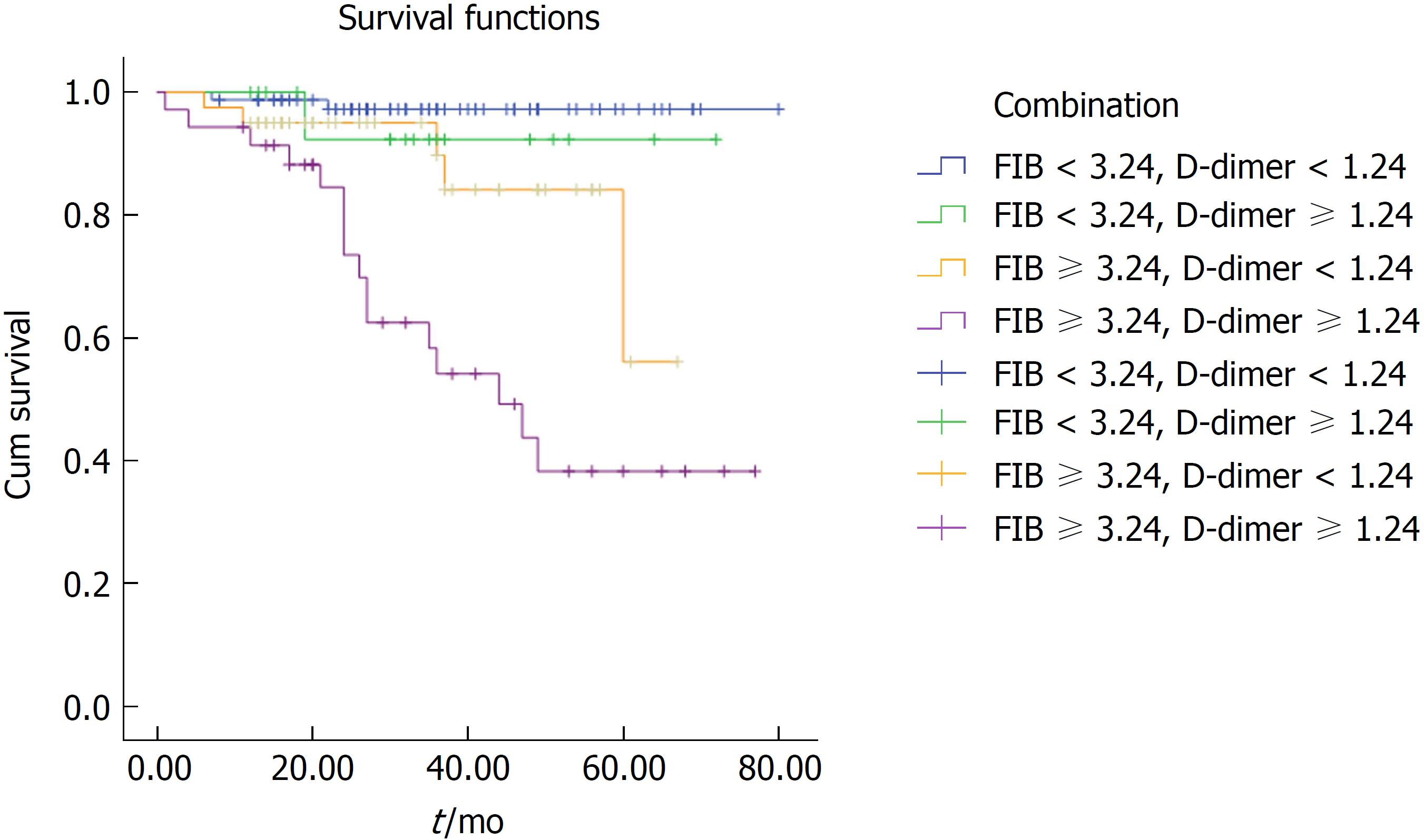Copyright
©The Author(s) 2018.
World J Gastroenterol. Nov 28, 2018; 24(44): 5046-5056
Published online Nov 28, 2018. doi: 10.3748/wjg.v24.i44.5046
Published online Nov 28, 2018. doi: 10.3748/wjg.v24.i44.5046
Figure 1 Receiver operating characteristic curves for predicting recurrence free survival among 170 gastrointestinal stromal tumor patients.
A and B: Plasma fibrinogen (FIB), D-dimer, D-dimer to FIB ratio (D-dimer/FIB), and platelet count. ROC: Receiver operating characteristic ; RFS: Recurrence-free survival; GIST: Gastrointestinal stromal tumor.
Figure 2 Kaplan-Meier survival curves of high and normal groups of different indicators in 170 resected primary gastrointestinal stromal tumor patients.
(A) Fibrinogen (FIB) category; (B) D-dimer category; (C) D-dimer-fibrinogen ratio (DFR) category; (D) Platelet (PLT) category; (E) Adjuvant imatinib treatment of intermediate and high risk gastrointestinal stromal tumor patients. RFS was significantly lower for each variable in the high group than in the low group (P < 0.05). FIB: Fibrinogen; DFR: D-dimer-fibrinogen ratio; RFS: Recurrence-free survival; GIST: Gastrointestinal stromal tumor.
Figure 3 Recurrence-free survival of gastrointestinal stromal tumor patients, according to the combination of fibrinogen and D-dimer.
The prognosis of the high fibrinogen and high D-dimer group was worse than that in the other groups. FIB: Fibrinogen; RFS: Recurrence-free survival; GIST: Gastrointestinal stromal tumor.
- Citation: Cai HX, Li XQ, Wang SF. Prognostic value of fibrinogen and D-dimer-fibrinogen ratio in resectable gastrointestinal stromal tumors. World J Gastroenterol 2018; 24(44): 5046-5056
- URL: https://www.wjgnet.com/1007-9327/full/v24/i44/5046.htm
- DOI: https://dx.doi.org/10.3748/wjg.v24.i44.5046















